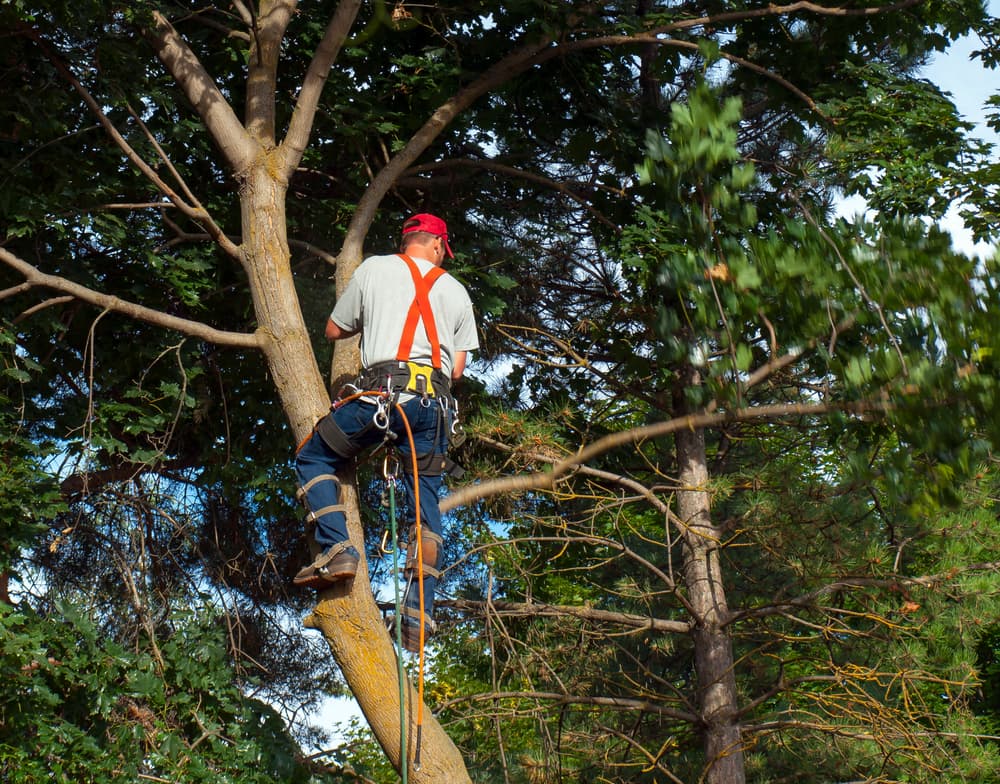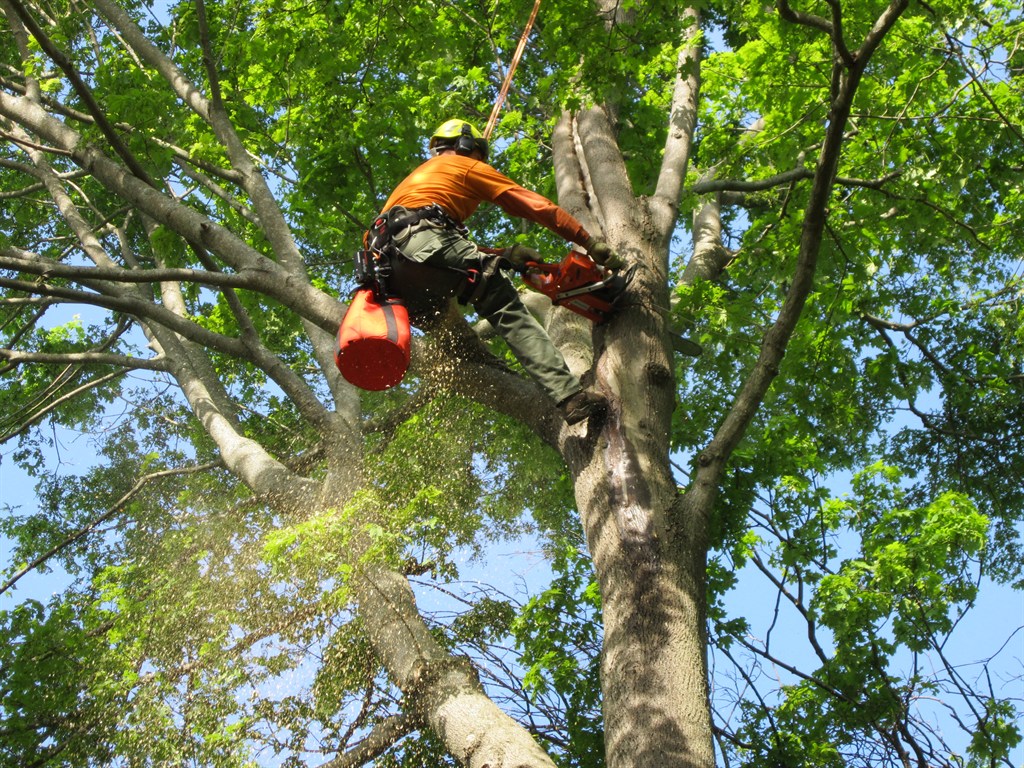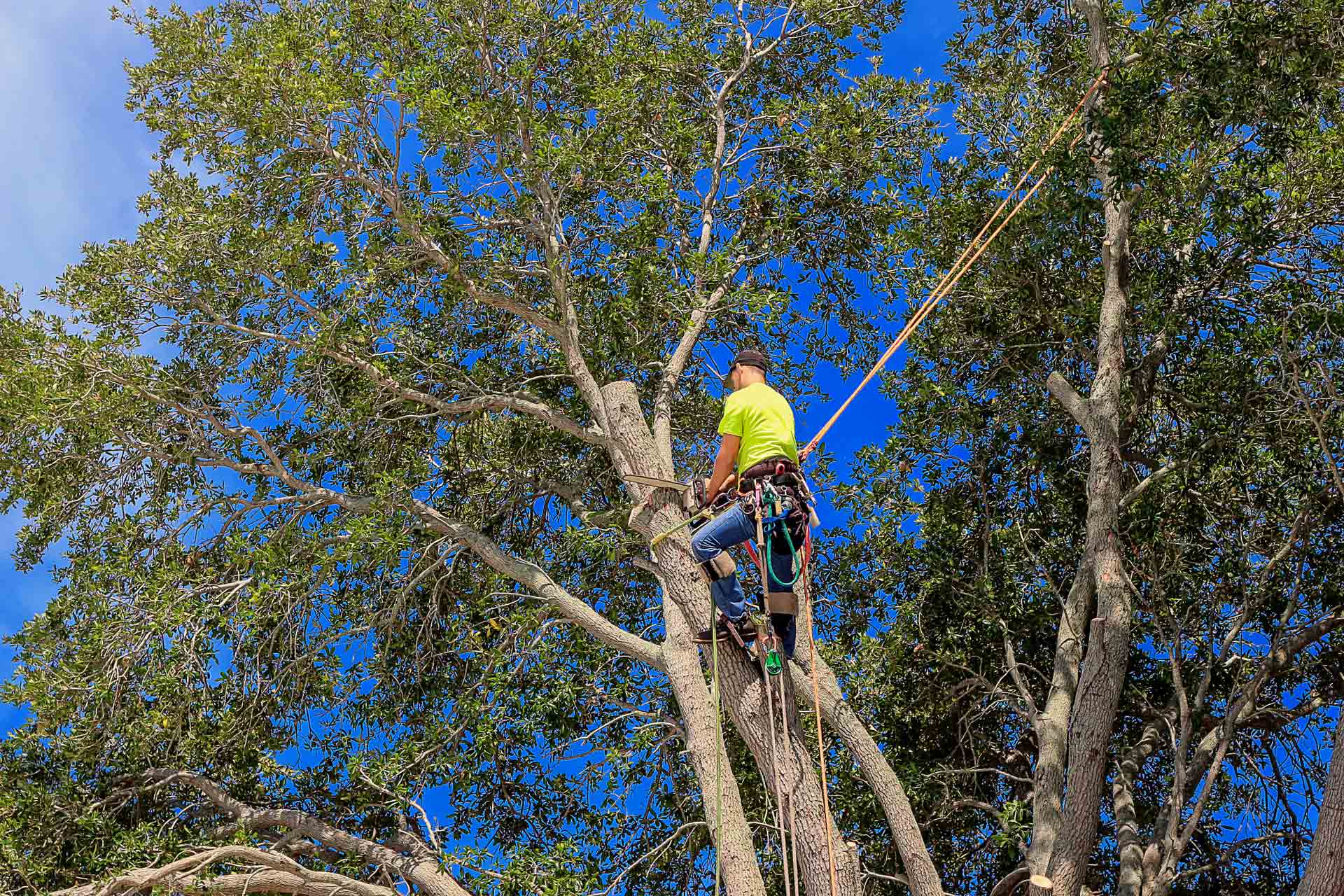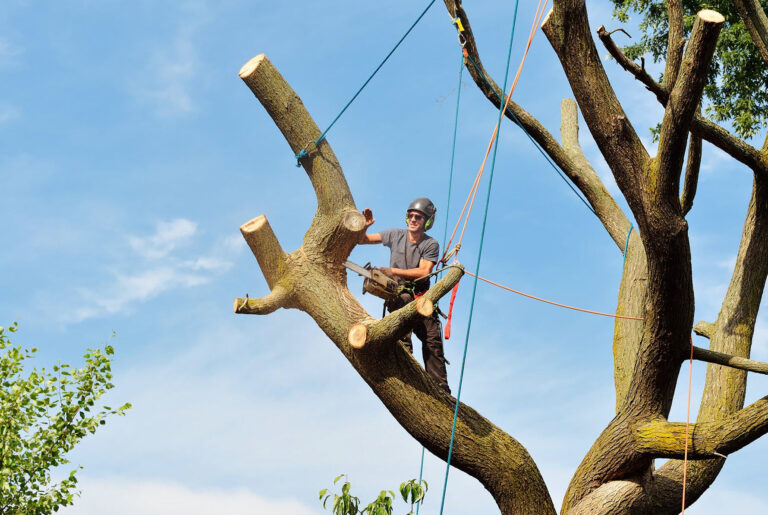Trees are a beautiful and essential part of our natural landscape. They provide shade, clean air, and add aesthetic appeal to any property. However, when trees become overgrown, they can pose serious risks to both our homes and our safety. In this article, we will explore the potential dangers of overgrown trees and the importance of regular tree maintenance. We will also delve into the process of tree removal and the legal considerations involved in removing trees in the Inner West area.
Understanding the Risks of Overgrown Trees
Potential Damage to Your Property
One of the key dangers of overgrown trees is the potential damage they can cause to your property. As trees grow taller and wider, their branches can extend over your house, power lines, or other structures on your land. In times of strong winds or storms, these branches may break and fall, damaging roofs, windows, or even causing structural harm to your home. It is crucial to be aware of the proximity of trees to your property and take necessary measures to ensure their growth is properly managed.
Threat to Personal Safety
Overgrown trees also pose a significant threat to personal safety. Weak or decaying branches may fall unexpectedly, especially during storms or heavy rainfall. These falling branches can cause severe injuries to anyone standing beneath them. Additionally, overgrown trees can obstruct visibility, making it difficult to navigate around your property, increasing the risk of accidents. Regular maintenance and, if necessary, tree removal can help mitigate these safety hazards.
Negative Impact on Other Plants
When trees become overgrown, they can cast extensive shade over other plants in your garden. Lack of sunlight can inhibit the growth of grass, flowers, and other vegetation beneath the tree, leading to an unbalanced and less attractive landscape. Furthermore, the root systems of overgrown trees can compete with other plants for valuable nutrients and water, potentially causing harm to nearby shrubs and flowers. By addressing overgrown trees, you can create a healthier and more vibrant garden environment.
Moreover, overgrown trees can also have indirect negative effects on your property. As they grow larger, their extensive root systems can spread underground, potentially causing damage to underground pipes, drainage systems, or even the foundation of your home. These roots can infiltrate small cracks in pipes, leading to leaks and costly repairs. Furthermore, if the roots of overgrown trees come into contact with the foundation of your home, they can exert pressure and cause cracks, compromising the structural integrity of your property.
Another aspect to consider is the impact of overgrown trees on the ecosystem. Trees play a vital role in providing habitat and food for various wildlife species. However, when trees become overgrown, they can disrupt the balance of the ecosystem. The dense canopy created by overgrown trees can limit sunlight penetration, affecting the growth of understory plants and reducing food sources for animals. By managing the growth of trees, you can help maintain a healthy and diverse ecosystem in your surroundings.
The Importance of Regular Tree Maintenance
Regular tree maintenance plays a critical role in identifying and addressing tree diseases. Diseases such as root rot or bacterial infections can weaken a tree’s structure and make it more susceptible to falling or dying. By regularly inspecting your trees for signs of disease, such as discolored leaves, fungi growth, or insect infestations, you can take early preventative measures to preserve the health and safety of your trees.
However, spotting signs of tree disease is not always an easy task. Some diseases may manifest in subtle ways, making them difficult to detect without the trained eye of an arborist. Arborists are skilled at identifying even the most inconspicuous signs of disease, such as changes in bark texture or the presence of tiny holes left by boring insects. Their expertise allows them to catch potential issues before they become major problems, saving you time, money, and the potential loss of a beloved tree.
Pruning: A Preventative Measure
Pruning is an essential practice in maintaining healthy trees and preventing overgrowth. By removing dead, damaged, or diseased branches, you can improve the overall structure and aesthetics of the tree while reducing the risk of branch failure. Pruning also allows for better air circulation and sunlight penetration, promoting the growth of new, healthy branches. Regular pruning should be part of your tree maintenance routine, preferably performed by professional arborists.
But pruning is not a one-size-fits-all approach. Different tree species have different growth patterns and requirements, and improper pruning techniques can actually harm the tree. This is where the expertise of professional arborists comes into play. They understand the unique needs of each tree species and can tailor their pruning methods accordingly. Whether it’s thinning out the canopy to allow more light to reach the lower branches or selectively removing branches to improve the tree’s overall shape, arborists have the knowledge and skills to perform pruning with precision.
The Role of Professional Arborists
When it comes to tree maintenance and removal, seeking the expertise of professional arborists is highly recommended. Arborists are trained in tree care and possess the knowledge and equipment required for safe and effective tree maintenance. They can accurately assess the condition of your trees, identify potential risks, and provide expert advice on the best course of action. Whether it’s pruning, disease treatment, or tree removal, arborists ensure that the job is done efficiently and with minimal impact on your property.
Furthermore, professional arborists adhere to industry standards and safety protocols when working on trees. They have the necessary equipment, such as harnesses, ropes, and chainsaws, to safely navigate and perform tasks at various heights. This ensures not only their safety but also the safety of your property and anyone nearby. By entrusting your tree maintenance needs to professional arborists, you can have peace of mind knowing that the job will be done right and with utmost care.

The Process of Tree Removal
Initial Assessment and Planning
Before removing a tree, an initial assessment is conducted to evaluate its health, structure, and potential risks. This assessment helps determine whether tree removal is necessary or if other treatments can address the issue. Arborists, who are trained professionals in tree care, carefully inspect the tree for signs of disease, decay, or structural instability. They also assess the tree’s proximity to buildings, power lines, and other structures to determine the safest method of removal. By conducting a thorough assessment, arborists can ensure that the tree removal process is carried out efficiently and safely.
Furthermore, during the planning stage, arborists create a detailed strategy for the tree removal process. This plan includes identifying the equipment needed, establishing a safe work zone, and developing contingency plans for unexpected challenges. Safety is paramount during this phase, as any miscalculation or oversight could result in property damage or personal injury. By meticulously planning each step of the tree removal process, arborists can mitigate risks and ensure a successful outcome.
Cutting and Felling the Tree
The process of tree removal involves cutting and felling the tree. Arborists use specialized tools such as chainsaws, ropes, and rigging equipment to carefully dismantle the tree in sections. The cutting technique employed depends on factors such as the tree’s height, diameter, and surrounding environment. Arborists strategically cut branches and sections of the trunk to control the tree’s descent and minimize impact on the surroundings.
Additionally, felling a tree requires precise coordination and communication among the arborists involved. Each arborist plays a specific role in guiding the tree’s fall direction, ensuring that it lands safely without causing damage. By working as a cohesive team, arborists can execute the tree removal process with efficiency and accuracy.
Stump Removal and Cleanup
After the tree has been cut down, the remaining stump needs to be removed to prevent regrowth and create a clean slate for future landscaping. Stump removal techniques include stump grinding, which involves using a specialized machine to grind the stump into mulch, or excavation, which requires digging out the entire stump and root system. The method chosen depends on factors such as the stump size, location, and intended land use.
Once the stump has been successfully removed, arborists focus on cleaning up the work site. This involves gathering and disposing of branches, leaves, and other debris generated during the tree removal process. By leaving the property in a tidy state, arborists ensure that the landscape is ready for any future planting or construction projects. Effective cleanup not only enhances the visual appeal of the property but also reflects the professionalism and attention to detail of the arborists involved.
Legal Considerations for Tree Removal in Inner West
Understanding Local Tree Preservation Orders
Before tree removal in Inner West area, it is crucial to understand if it is protected under any local tree preservation orders. These orders restrict the removal or pruning of certain trees based on their species, size, or location. Failure to comply with these regulations can result in significant penalties. Familiarize yourself with the specific regulations in your area or consult with a professional arborist to ensure compliance.
Local tree preservation orders are put in place to protect the natural beauty and environmental benefits that trees provide. These orders aim to maintain the balance between urban development and the preservation of green spaces. By safeguarding certain trees, these regulations contribute to the overall well-being and aesthetic appeal of the Inner West community.
Seeking Necessary Permissions
In some cases, permission may be required from local authorities or relevant bodies before removing a tree. This is especially true if the tree is considered significant, protected, or poses potential risks to public safety. It is advisable to check with your local council or arborist to determine if any permissions or permits are needed for tree removal on your property.
Obtaining the necessary permissions for tree removal ensures that the process is carried out responsibly and in accordance with the law. It also allows authorities to assess the impact of tree removal on the surrounding environment and provide guidance on suitable alternatives, such as tree relocation or replacement. By seeking the appropriate permissions, you contribute to the sustainable management of trees in the Inner West.

Dealing with Boundary and Neighbor Disputes
In situations where the tree in question is located near a property boundary, conflicts may arise between neighbors regarding tree removal. It is important to approach such disputes calmly and considerately. Open communication with your neighbor, along with professional advice and mediation if necessary, can help resolve any disagreements and reach an amicable solution.
Boundary and neighbor disputes can be complex, as they involve legal, emotional, and practical considerations. Consulting with a qualified arborist or seeking legal advice can provide you with the necessary guidance to navigate these situations effectively. By addressing boundary and neighbor disputes in a respectful manner, you can maintain positive relationships within your community while ensuring the safety and well-being of your property.
In conclusion, tree removal is a crucial aspect of ensuring the safety and well-being of your property and those who inhabit it. Overgrown trees can pose various risks, from property damage to personal safety hazards. Regular tree maintenance, including pruning and disease prevention, can help mitigate these risks. When tree removal becomes necessary, it is essential to follow proper procedures, seek professional help, and adhere to any relevant legal requirements. By taking these proactive measures, you can protect your home from the potential dangers presented by overgrown trees and maintain a safe and beautiful environment in the Inner West.
See Also: Inner West tree removal: ensuring safe and effective services.


